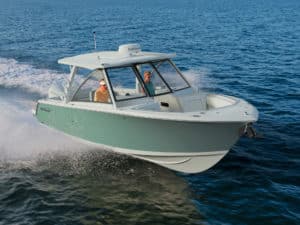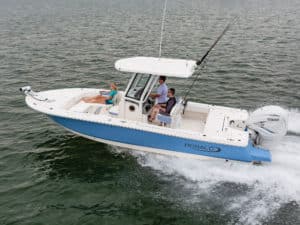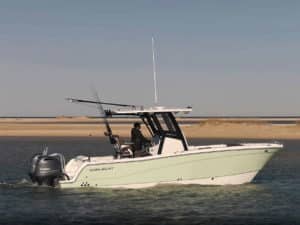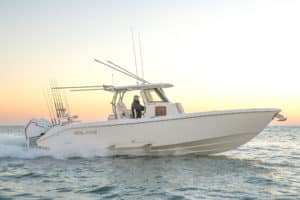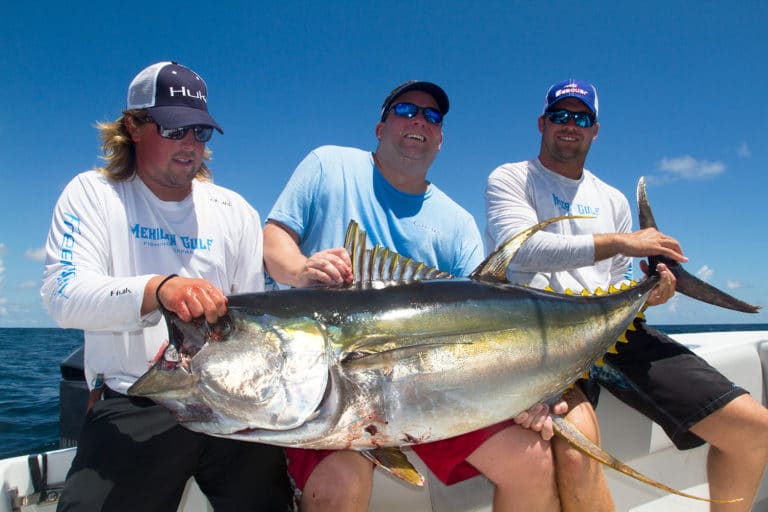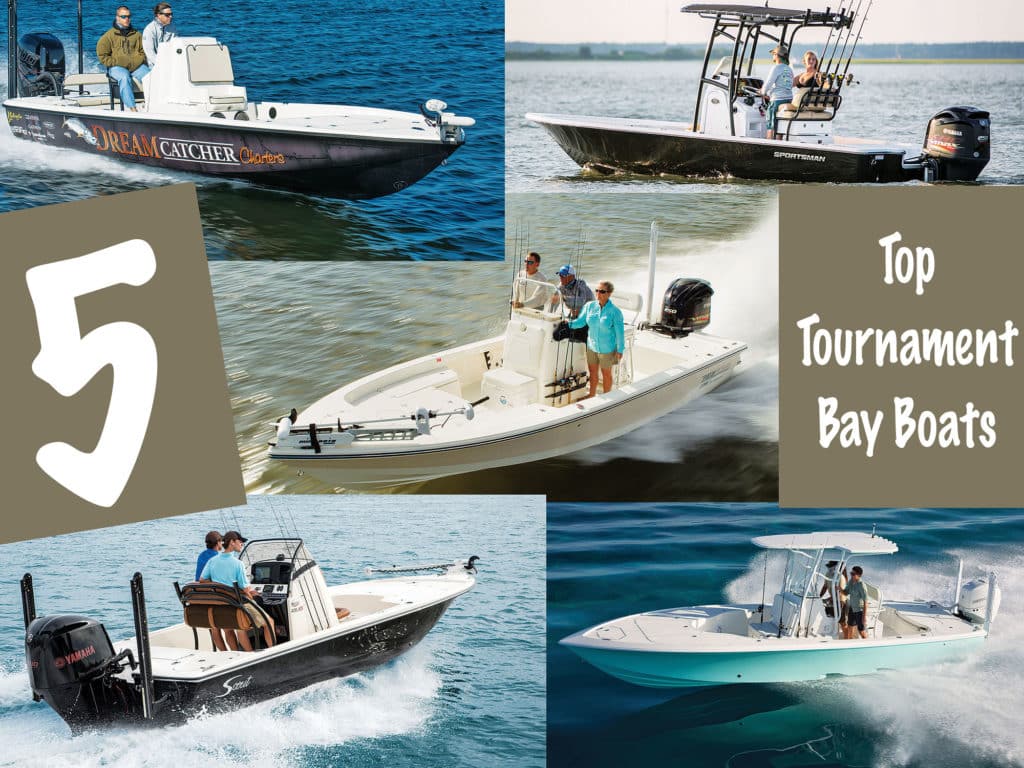
Inshore fishing tournaments flourished like mushrooms in a bog prior to the 2008 economic downturn. Smiling pro anglers posed for the TV cameras, sporting colorful polyester jerseys just like every other ESPN hero.
Boatbuilders cashed in too. A new vessel trend exploded: the tournament-edition bay boat. Then, disaster: Banks failed, the market bottomed. We remember the story, and we’ve all clawed our way back, slowly.
“The demand [for tournament bay boats] has started to bounce back,” says Charlie Johnson, director of marketing for Maverick Boat Co. “If it will ever come back to the pre-recession days is hard to tell. What’s for certain is that there will always be that group of hardcore anglers that requires the best tool. … For many of those anglers, a tournament-edition-style boat is that tool.”
To explore some of today’s top tournament bay boats — from 22 to 27 feet — I asked five builders five questions. Answers have been edited for space. (Boats are listed by LOA.)
Pathfinder 2200 TE
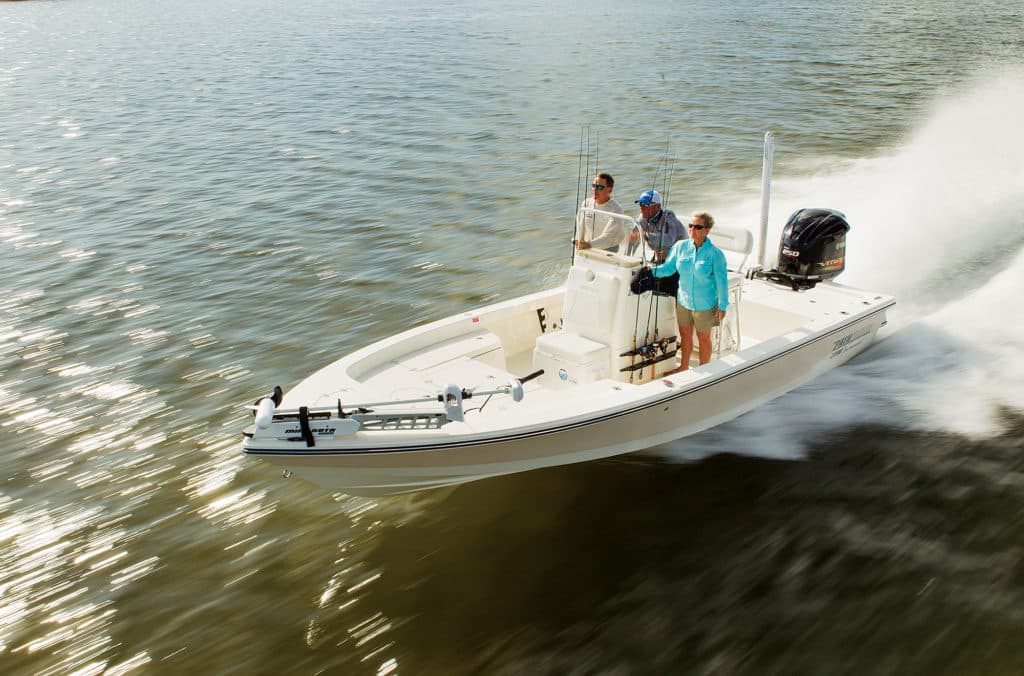
Charlie Johnson, Director of Marketing, Maverick Boat Company
Q: Why did you choose this LOA and beam for a tournament-edition bay boat?
At 22 feet 2 inches long and with an 8-foot-6-inch beam, the boat is light enough that it can be very fast with a lightweight, economical engine like a Yamaha VF250, but it still has the length to span tight chop comfortably and is narrow enough that it knifes through the waves. Plus, this size is very fuel-efficient, allowing you to run long distances quickly without wasting fishing time refueling. Finally, the boat floats very shallow, allowing you to get to some fish in skinny water that the rest of the competition in bigger boats can’t reach.
Q: What factory-installed features does a boat need to make it ready for fishing inshore or redfish tournaments?
A jack plate is very important to allow you to jump up quickly in shallow water and head to the next spot. Time management is key in tournaments, and every second you’re not either quickly going to the next spot or fishing is time wasted.
Another must-have is a proper release well that’s big enough to fit multiple fish at the largest limit size and creates enough water flow and turnover to keep those fish alive. We accomplish that with our dual inflows and bottom-to-top drainage system, and augment the circulation with standard recirculation pumps.
If you fish circuits that allow live bait [many redfish tournaments do not], a large second livewell can be critical so that you can keep your weigh-in fish and your bait separate.
Q: What running/fishing characteristics should the hull possess to make it optimal for tournament fishing?
See first answer.
Q: How do you recommend customizing a tournament-edition model with regard to additional gear beyond standard features?
On tournament boats, dual Power-Poles have almost become as big a necessity as a trolling motor and matching battery charger. All Pathfinders come standard pre-wired for trolling motors and have plates laminated into the deck and transom for mounting trolling motors and Power-Poles.
The new trolling motors with GPS capability and anchor functionality give a real advantage, as do the most current GPS and sonar systems with side imaging. Every little bit helps in a competitive tournament.
Q: What are sales like for this kind of boat?
The demand has started to bounce back as more tournament series start up again with the improving economy, and as more sponsors are looking for places to put their marketing dollars.
Scout 231 XS
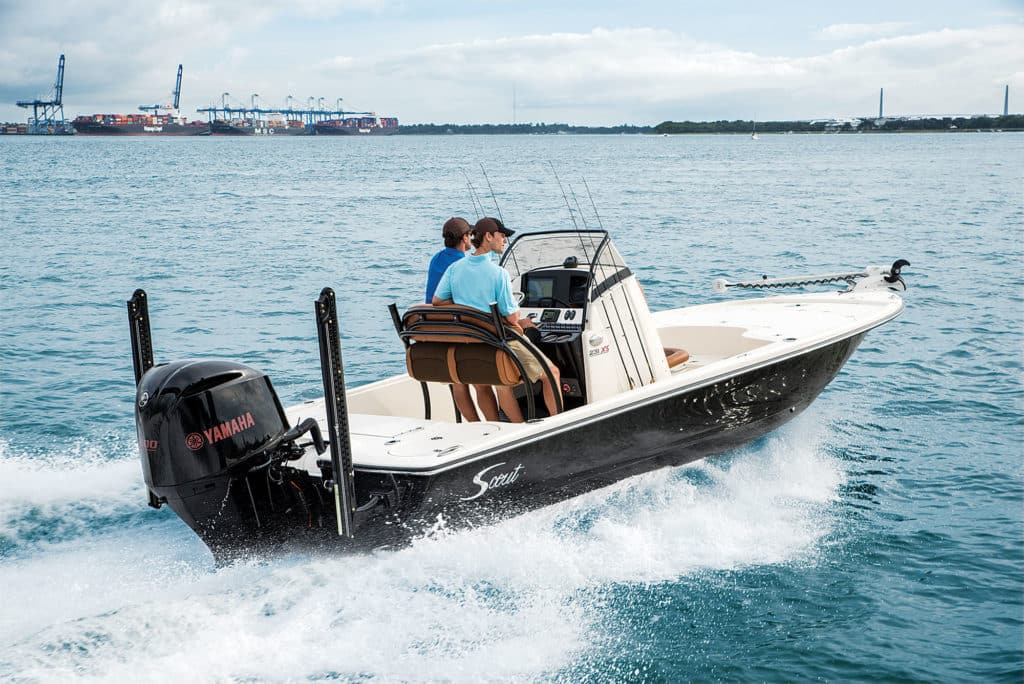
Alan Lang, National Sales Manager, Scout Boats
Q: Why did you choose this LOA and beam for a tournament-edition bay boat?
It can comfortably fish two to three anglers, and it’s not too big and heavy to get into the skinnier waters; it’s the perfect size for a bay boat that can handle chop and get shallow. It also screams with a 300 hp engine. We wanted something to match the 300 to stay away from the extra weight of the 350.
Q: What factory-installed features does a boat need to make it ready for fishing inshore or redfish tournaments?
Livewells, release well, storage for tackle and gear, ample rod storage that makes it easy to access any rod without removing others, comfort, reliability, safe and sturdy helm seating for high speeds, and of course style. We’ve also added a head option for those emergencies. This is something you don’t normally see on 23-foot bay boats.
Q: What running/fishing characteristics should the hull possess to make it optimal for tournament fishing?
Usually, the lower the draft [in inches], the better. However, with lower draft, you’re usually sacrificing the depth of the V in the hull, causing the boat to lose its rough-water capability. We’ve chosen a draft of 12 inches for this boat. We wanted something that could handle rough bays but still get into most of the skinny backwaters.
The boat is 100 percent hand-laid. This removes a lot of the excess resin weight and provides a stronger hull. Our boat comes in at 2,100 pounds dry [and without an engine]. Our deadrise is 14 degrees at the keel; however, it’s a variable deadrise hull with a very sharp entry and lots of bow flare to tame the chop.
Q: How do you recommend customizing a tournament-edition model with regard to additional gear beyond standard features?
Trolling motor, charger to charge the trolling-motor batteries, all livewell/baitwell options, Power-Pole or dual Power-Poles, the 300 hp engine option, and maybe additional rod holders for the bow.
Q: What are sales like for this kind of boat?
We built this boat with characteristics to satisfy the most serious of tournament anglers, keeping in mind speed, performance, fishability, etc. However, we’ve also incorporated lots of amenities and style that would still make the boat very appealing to the weekend warrior. The boat has lots of style and is ready for whatever or wherever.
Sportsman Tournament 234
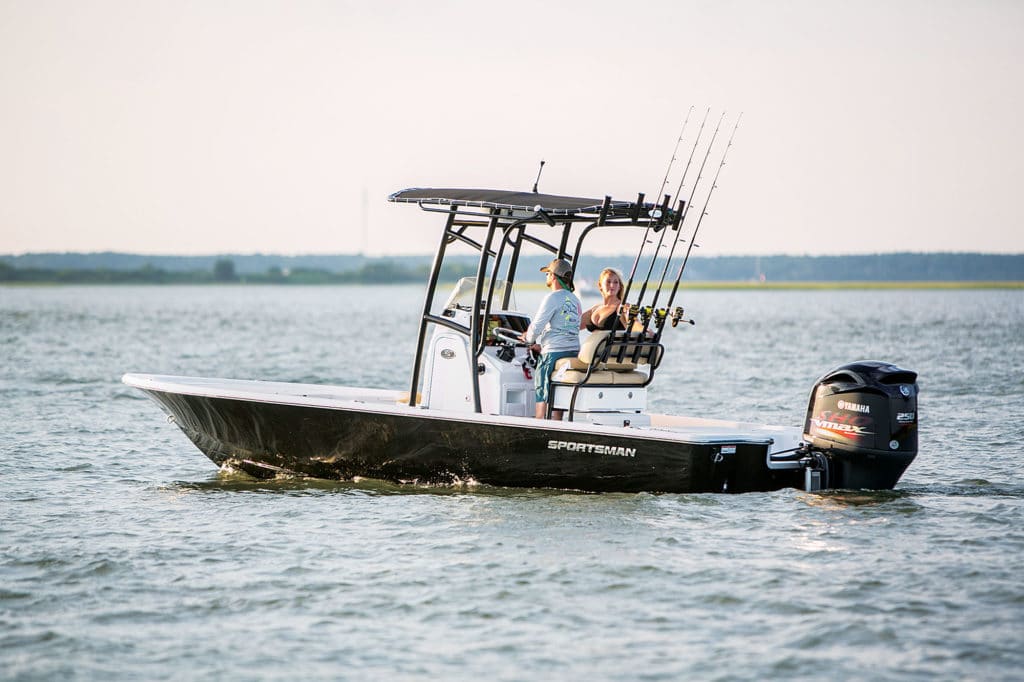
Tommy Hancock, Co-owner, Sportsman Boats
Q: Why did you choose this LOA and beam for a tournament-edition bay boat?
We feel that 23 feet 4 inches is a good size for the serious tournament angler and professional guide. The length, along with an 8-foot-5-inch beam, provides ample space for anglers [and] lots of storage for tackle and gear.
Q: What factory-installed features does a boat need to make it ready for fishing inshore or redfish tournaments?
The serious tournament boat needs large-capacity livewells along with ample storage for the tackle and gear required. Our Tournament 234 has all of the above with oversize livewells [two at 20 gallons and one at 12 gallons] and tons of storage. The serious tournament boat also needs easy access to all systems, and the Sportsman 234 features the best access in the industry.
Another important aspect of a serious tournament boat is rough-water capability. The 234 shines in this area as well due to our deep forward entry design.
Q: What running/fishing characteristics should the hull possess to make it optimal for tournament fishing?
See previous answers.
Q: How do you recommend customizing a tournament-edition model with regard to additional gear beyond standard features?
Many of our customers will go with an optional jack plate to enhance the performance and provide better shallow-water ability. Most guys will also add a trolling motor and a Power-Pole or two, along with an onboard charging system. Depending on the area, some guys will opt for our deluxe T-top option.
Q: What are sales like for this kind of boat?
Sales for both our Tournament 214 and Tournament 234 have been robust. We see a lot of guys who want a boat they can tournament-fish and also use with the family on nontournament weekends. Both our 214 and 234 fit this use perfectly.
Yellowfin 24 Carbon Elite
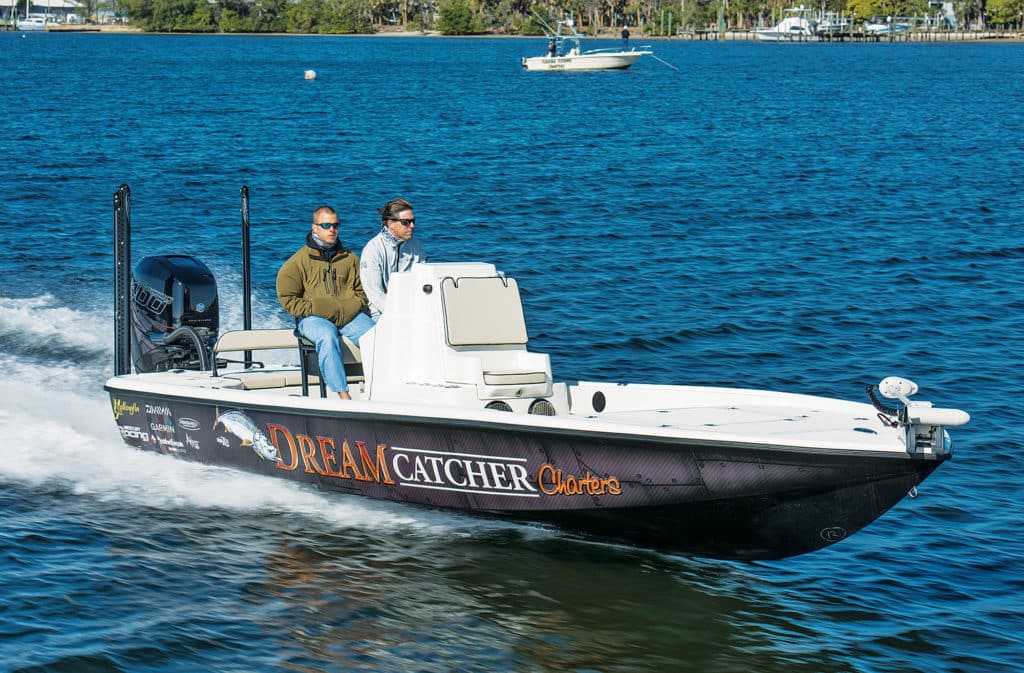
Heath Daughtry, Vice President, Yellowfin
Q: Why did you choose this LOA and beam for a tournament-edition bay boat?
Fishing in a 17- to 20-foot boat has its limitations on the Florida tournament trail. We wanted a platform that could comfortably fish three anglers from the bow, a wide enough beam to support the draft we desired, and the overall length to distinguish us from the rest of the industry on large loads and fuel economy.
Q: What factory-installed features does a boat need to make it ready for fishing inshore or redfish tournaments?
The 24 and 24CE come with a standard 50-gallon pressurized livewell, along with a 50-gallon release well — two essential items for tournament fishing. The pressurized well allows the angler to carry his bait or catch for a long run back to the scales without fatiguing the bait or the catch.
Both wells are plumbed with an upward rotation of water, with built-in 1½-inch overflows. The 24 and 24CE come standard with an 8-inch Bob’s Machine Shop jack plate, an 8-foot Power-Pole, tackle storage under the leaning post, and ample rod storage, all of which are instrumental for successful tournament anglers.
Q: What running/fishing characteristics should the hull possess to make it optimal for tournament fishing?
The ideal draft for a tournament bay boat is 12 inches. Our 24 and 24CE are built for long runs, crossing big water, [and] yet they still have the capability to fish the backcountry when needed. Tournament anglers need to carry additional bait and gear. It’s also important that the anglers are able to move freely and organize gear.
Anglers are making longer runs for winning fish, somewhat adapting an offshore approach of targeting fish near temperature breaks and water flows. These challenging runs require superior fuel economy. The Yellowfin 24 and 24CE are designed with this in mind, allowing the team to travel to areas that were out of reach in the past.
Q: How do you recommend customizing a tournament-edition model with regard to additional gear beyond standard features?
The customer can design the boat in any way at our facility. Tournament fishing, in general, is somewhat of a geographical conversation. Texas anglers design options that fit their needs for that specific territory, which might be completely opposite of what a southwest Florida angler wants.
Q: What are sales like for this kind of boat?
The demand for this style of build is high. Recreational anglers are just as concerned about keeping fish and bait alive as the tournament angler is. This level of performance is expected.
SeaVee 270Z
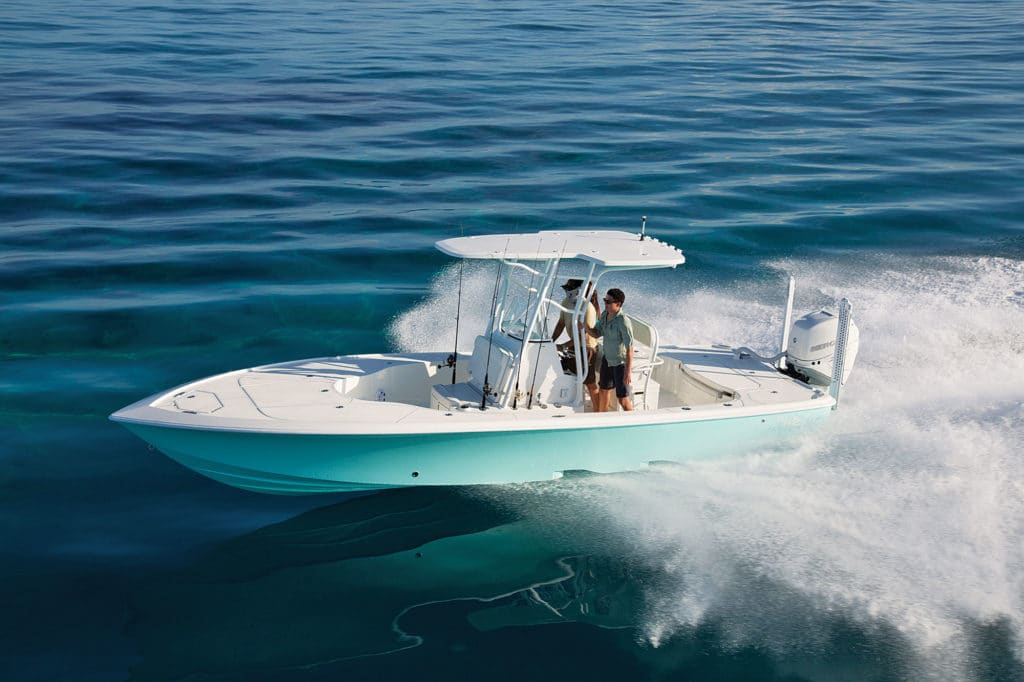
John Caballero, Marketing Director, SeaVee Boats
Q: Why did you choose this LOA and beam for a tournament-edition bay boat?
The 270 offers an extremely stable and large platform so the angler can focus on catching the winning fish rather than keeping his balance. The wide beam also allows us to increase storage and space around the console.
The length and beam enhance the boat’s seakeeping: It can run with fewer accelerations [reduced slamming] in heavy sea conditions. By making the boat bigger, we could create sharper deadrise forward while not compromising the performance offered by the twin-step hull. Tournament fishermen can get on the fish first or fish spots that smaller boats can’t.
Q: What factory-installed features does a boat need to make it ready for fishing inshore or redfish tournaments?
We have two standard pressurized livewells, with the option for two additional livewells or release wells in the stern. The deep, rounded well aft accommodates pinfish baits like pilchards or threadfin herring.
The standard forward livewell was designed for shrimp and is relatively shallow to make it easy to collect bait. Each well can be equipped with a recirculating and aerating pump. An optional sea chest provides solid clean water to all livewells at all boat speeds.
The boat also includes two dedicated molded compartments designed as release wells. In redfish tournaments, it’s common practice to store tournament culls on board, for weighing and subsequent release.
Q: What running/fishing characteristics should the hull possess to make it optimal for tournament fishing?
More inshore tournament anglers now run longer distances to locate fish. The ability to run to where the fish are can make the difference. The 270Z is light, strong and stiff owing to its vacuum-infused structure, including the unique monocoque construction [in the hull, stringers and bulkheads] and the infused deck. This means the boat is more efficient.
Q: How do you recommend customizing a tournament-edition model with regard to additional gear beyond standard features?
SeaVees are factory-direct, with all customer-requested options installed here. The dedicated trolling-motor-battery storage compartment keeps the three Group 31 batteries and charger dry and out of the way while making future battery service simple.
The boat is trolling-motor-ready and includes a molded platform. We offer dual 10-foot Power-Pole Blades.
The boat is available with shore power or 110VAC options. For the trailer-boat customer, we offer a dedicated on-trailer charging system. Alternatively, the boat is available with a conventional shore-power system that includes a galvanic isolator and GFCI protection.
Q: What are sales like for this kind of boat?
The bay boat is a new category for SeaVee, and therefore we see sales climbing exponentially. Inshore boats are popular enough, but with offshore capabilities as well, the 270Z is expected to continue developing the category and broadening the appeal of a bay boat to the discriminating buyer.

